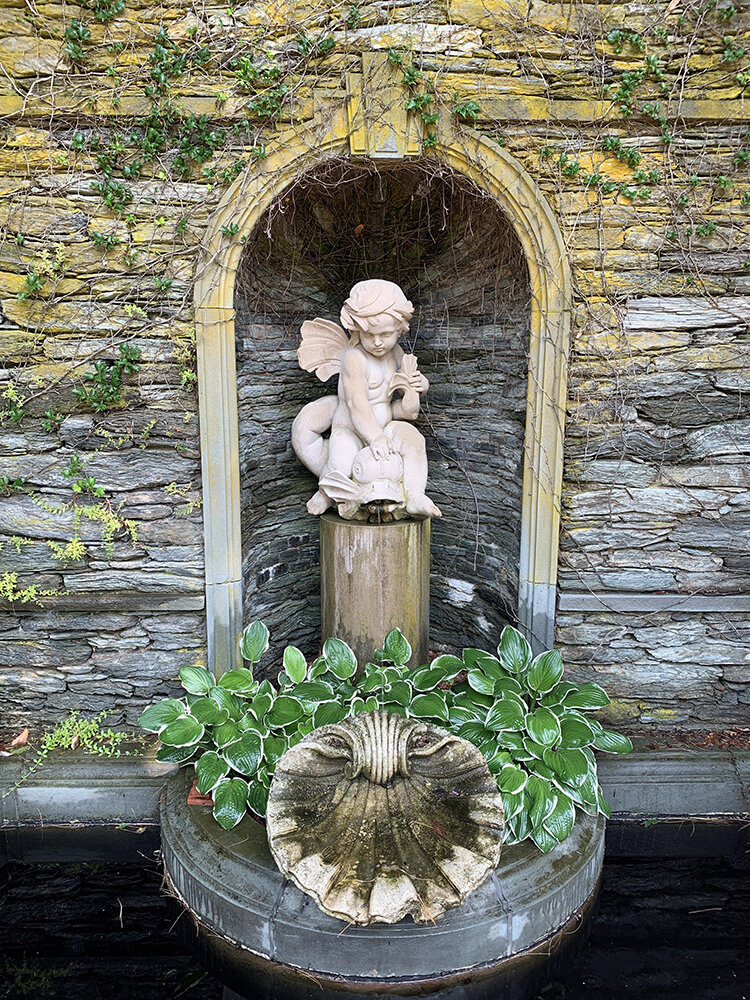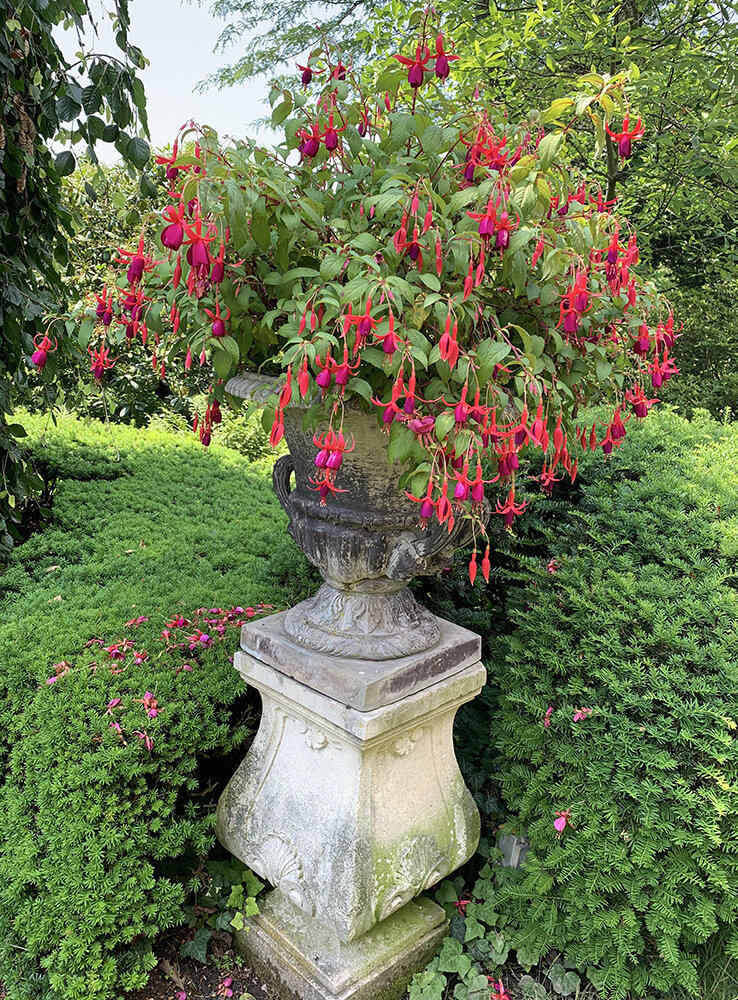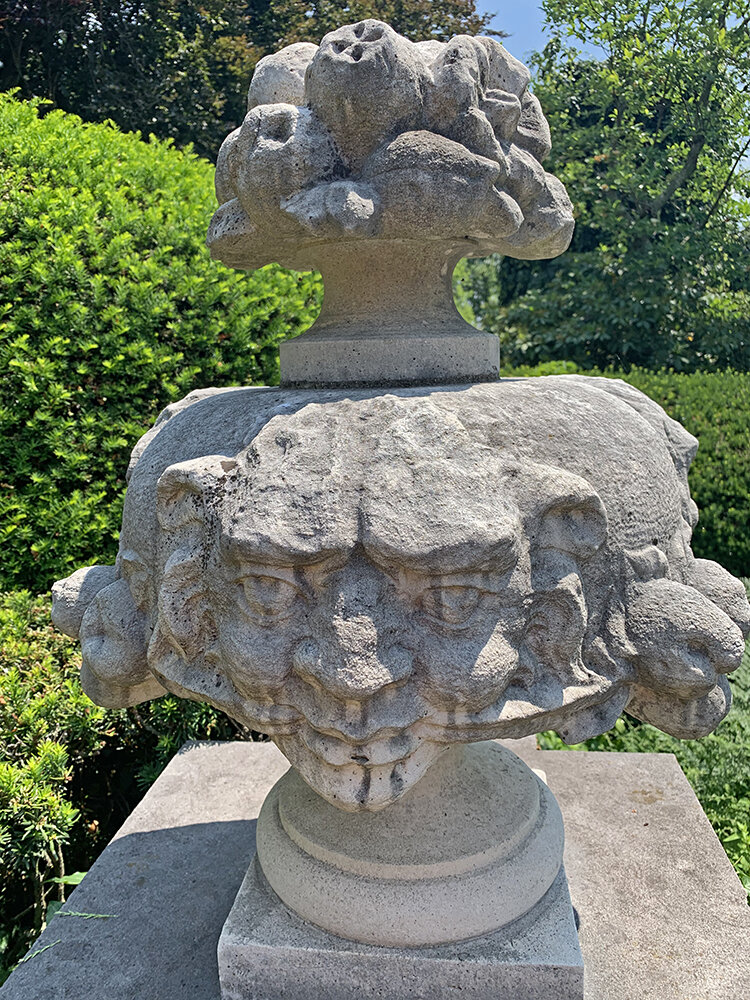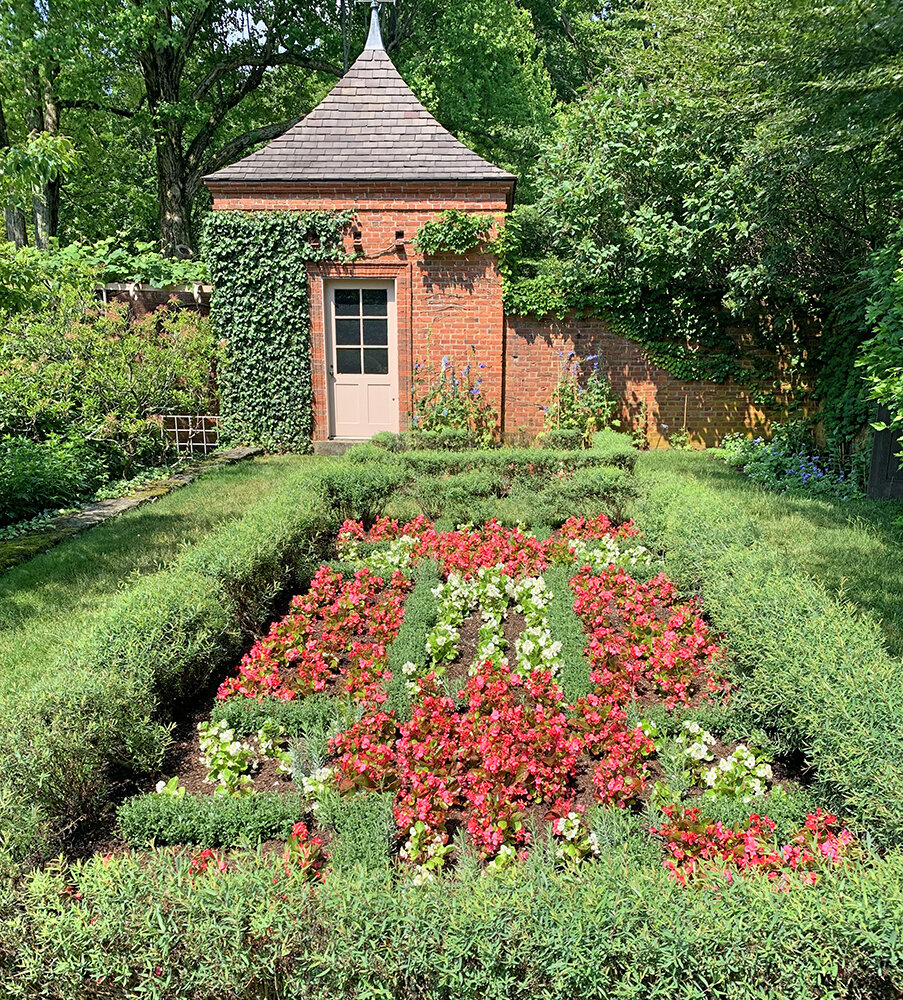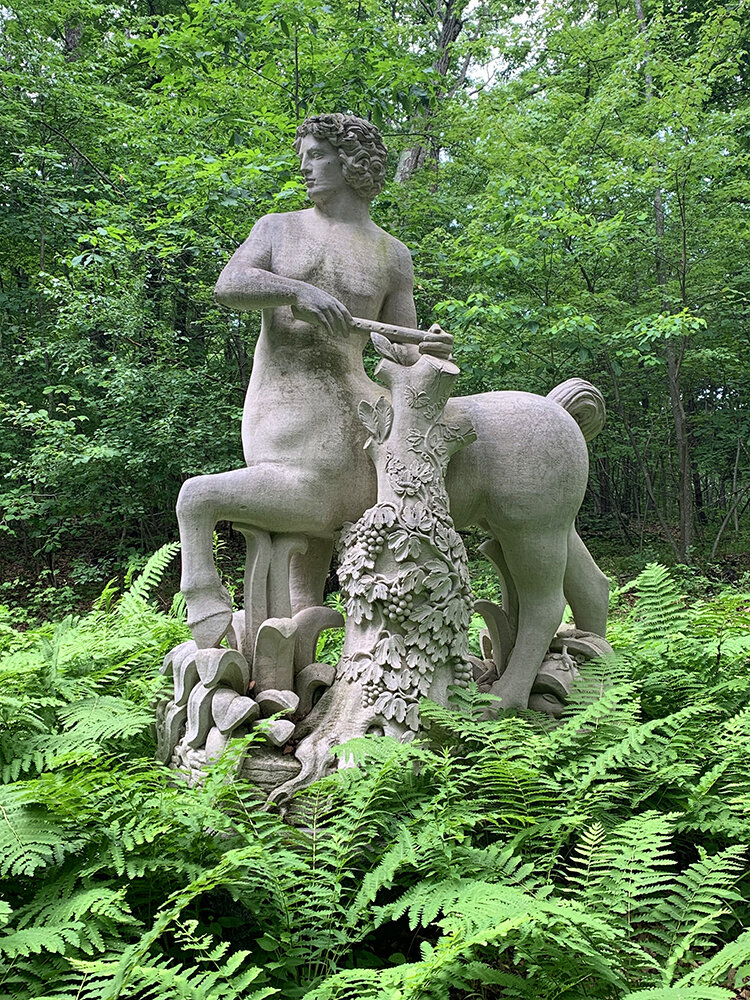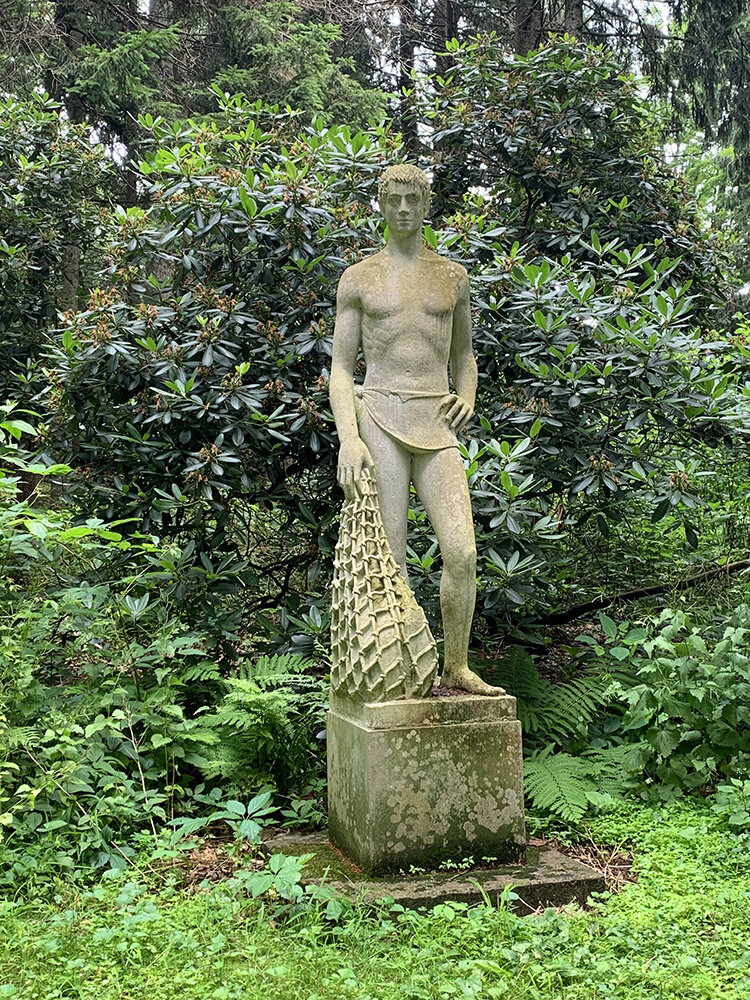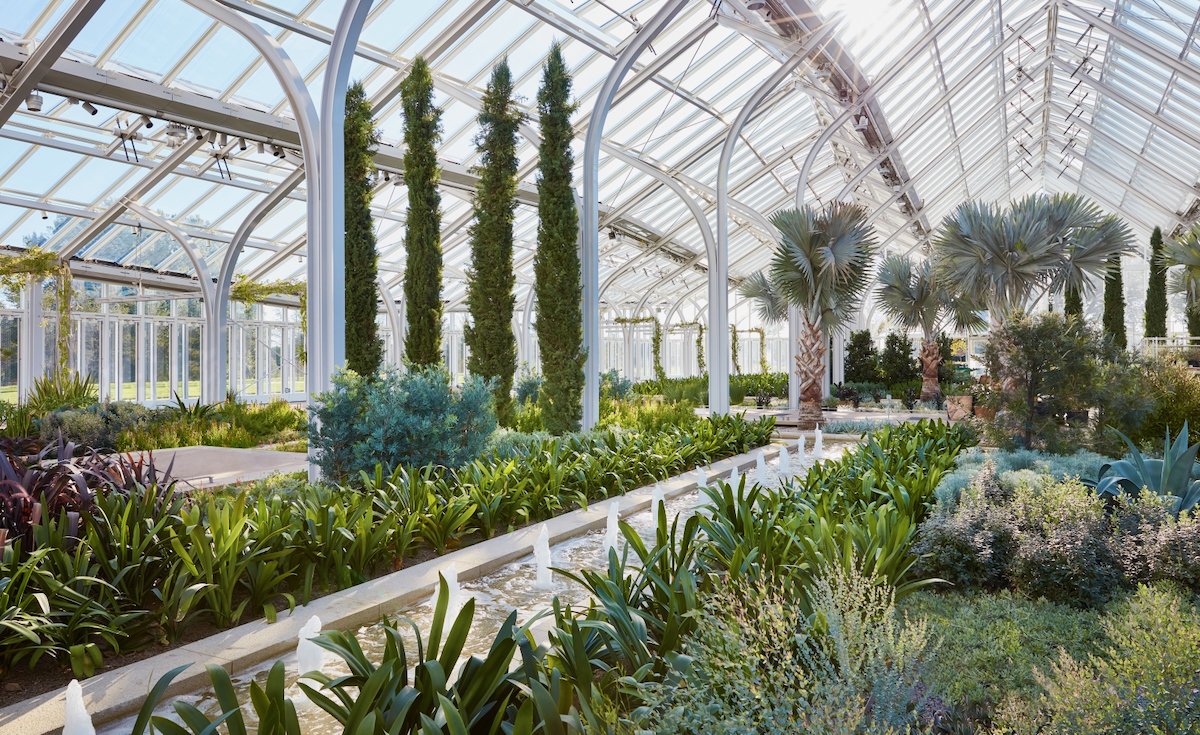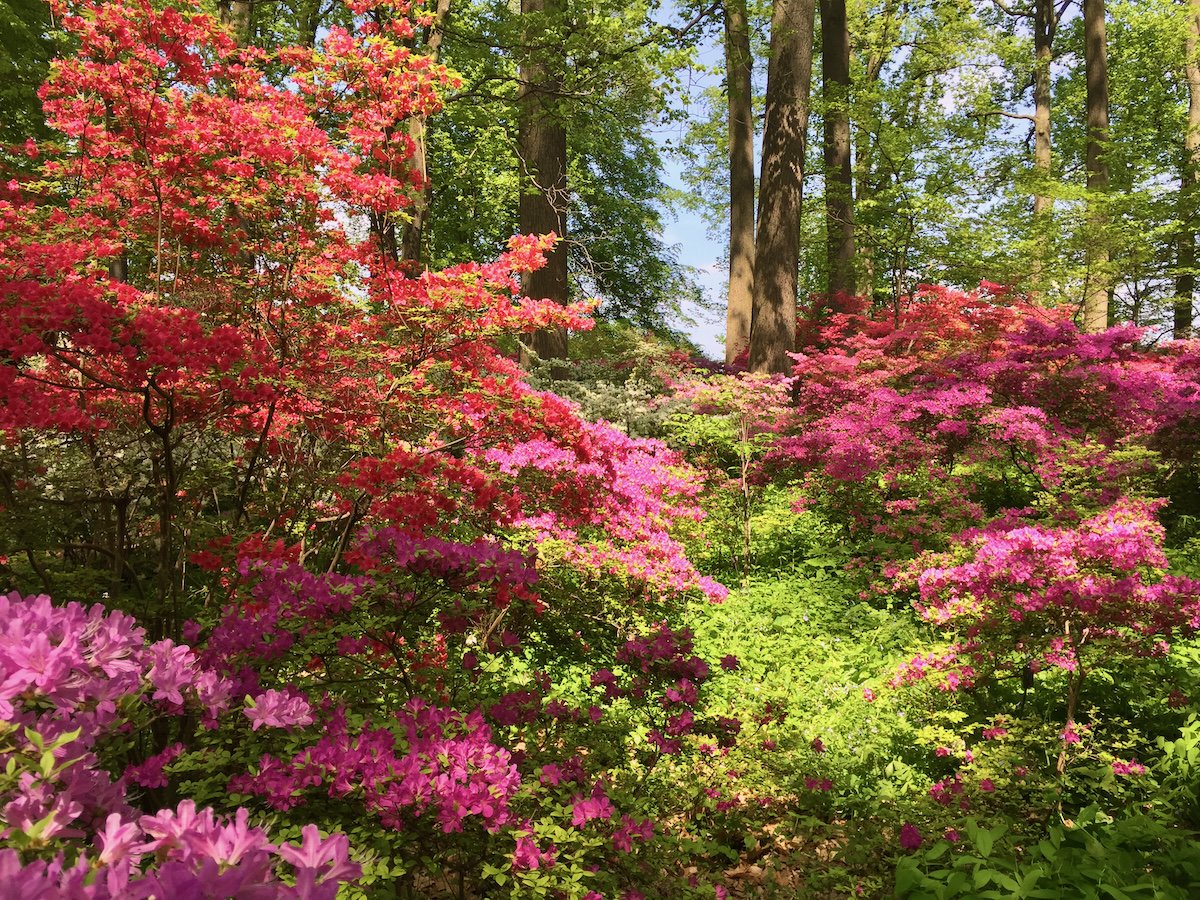Wethersfield: A Hudson Valley Treasure
/Nestled in 1,000 acres of beautiful rolling hills in New York’s Dutchess County, Wethersfield is considered one of the best examples of a classic Italian Renaissance garden in America.
Wethersfield was built as a summer residence by Chauncey Deveraux Stillman (1907-1989), an heir to one of America’s great family banking fortunes. Educated at Harvard and the Columbia School of Architecture, Stillman had a distinguished career as director of the oil and mining enterprise Freeport-McMoRan, and as a naval intelligence officer during WWII. A 20th-century Renaissance man, he was interested in yachting, paintings, sculpture, architecture, religion, farming, wildlife, horticulture, and horses. In fact it was the Millbrook Hunt that brought him to Dutchess County, where he was struck by the amazing views and farming potential of the land. In 1937 Stillman purchased two abandoned farms, and expanded the property over the next 50 years. He named his estate Wethersfield in honor of Wethersfield, Connecticut, where his family first settled in 1705.
The first buildings on the property were the stable and carriage house, which still house Stillman’s antique carriage collection and dozens of prize ribbons. The Georgian Colonial brick and brownstone residence was situated on the highest point of the property, with its main entrance to the west. It was designed by Bancel LaFarge, a Beaux Arts architect. Compared to the lavish summer homes of his contemporaries in Newport, this was a modest residence decorated with Baroque-style frescoes, antiques, sculpture, and paintings by Italian masters as well as French and American Impressionists.
Stillman with his grandson
Stillman was in intellectual, interested in all forms of natural sciences. With the assistance of a farm manager, Stillman continued to farm the property, and brought progressive soil and water conservation techniques to Dutchess County. He practiced contour farming—planting in rows that are perpendicular to slopes and thereby reduce soil erosion and water runoff by 50%. He also excavated 12 ponds to catch water runoff and use it for watering crops and his garden.
He was also a deeply religious man who converted to Catholicism in midlife. His interest in the Catholic faith, philosophy, classics and history, can be found woven into the design of his home and garden, from the home’s chapel, to reliefs depicting scenes from the Bible, Latin inscriptions, and statuary referencing Greek and Roman mythology.
In 1947, Stillman commissioned Evelyn N. Poehler, a Connecticut landscape architect who had been trained at the Lowethorpe School for horticulture and landscape design in Groton, Massachusetts, to design a swimming pool. The commission grew into the design of a traditional Italianate garden and a wilderness garden whose design evolved over the next 25 years.
Poehler and Stillman collaborated on a 10-acre portion of the property closest to the house, which was divided into a 7-acre Wilderness Gardens and a 3-acre classic Italian Renaissance Garden. Classic Italian gardens are green gardens with clipped hedges, a strong central axis, framed views, allées, terraces, enclosed garden rooms, arches, sculpture and water features. Pairs of shrubs, trees, statues or urns frame views and entrances. Flowers are usually used in pots as accents.
When you visit Wethersfield, your tour will begin at a visitor’s booth at the outer edge of the garden, and you will gradually approach through the garden to the house. You will first see the gorgeous views of rolling hills and woodlands that surround the formal gardens. The garden entrance is guarded by a pair of crouching lions. As you enter the terraced gardens, you will see garden rooms framed by clipped yews and weeping beeches in serene shades of green. To the right is the Belvedere, on a rise surrounded by white pine. A solid shale wall topped by a stone balustrade features a niche that encloses a cupid fountain with plantings of sedums, campanula and other delicate flowers spilling from the stones. The upper terrace forms the Peacock Walk, with a cage of these colorful birds at one end. To the left of the Lower Terrace is the Cutting Garden, traditionally used to supply flowers for the house. It is now used as a teaching garden for a staff of interns.
Belvedere
peacock walk
lower terrace with weeping beeches
cutting garden
The path through the Lower Terrace brings you to a stunning oval reflecting pool. This was originally the swimming pool that Poehler designed for Stillman. Notice the beautiful view to the south, with an ornamental haha wall borrowed from English gardens. To the north, a 190 foot long allee of tall arborvitae brings you to a fountain with a green and gold naiad, or water nymph, created by sculptor Carl Milles.
reflecting pool
Naiad fountain
As you continue toward the house, you enter the Inner Garden, enclosed by the house, a beech tunnel, and a walled knot garden. This is the oldest garden at Wethersfield, designed by Bryan J. Lynch in 1941. A grape arbor on one side creates an extension of the dining room and was used for outdoor lunches. The rill evokes Persian gardens and brings the soothing sound of water to this lovely courtyard. Borders of perennials and annuals frame the keyhole lawn. Curved steps lead to the Victorian-style knot gardens outside the Grasshopper House, named for its whimsical weathervane. Inside are grisaille murals of Wethersfield scenes painted by American artist Hight Moore.
inner garden. photo courtesy of tcfl.org
south terrace
A linden hedge leads to the South Terrace, whose lower level offers beautiful views of Wethersfield’s hay fields. Descending one more level to the Pine Terrace, you enter a lovely shady seating area with a rectangular pool stocked with goldfish, and adorned with pots of fuschias and agapanthus. Here you also view the Palladian Arch which will bring you to the Wilderness Garden.
palladian arch
The Wilderness Garden is a woodland garden with carriage drives and trails that weave through stands of sugar maples, beech, larch and white pine underplanted with rhododendrons, mountain laurels and other blooming shrubs. Drifts of Christmas ferns, maidenhair and hay scented ferns line the trails, which are punctuated with limestone and marble statuary. These statues of animals, nymphs, centaurs and Greek gods were carved in the late 1960s and 1970s by English sculptor Peter Watts and Polish sculptor Jozef Stachura.
Wethersfield is located at 257 Pugsley Rd., Amenia, NY. At this time, the garden is open Fridays, Saturdays and Sundays from noon to 5 pm and admission is temporarily waived. The trails are open daily from dawn to dusk.
You Might Also Like









